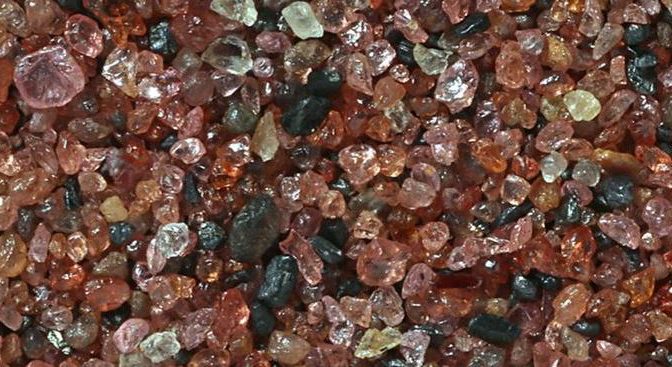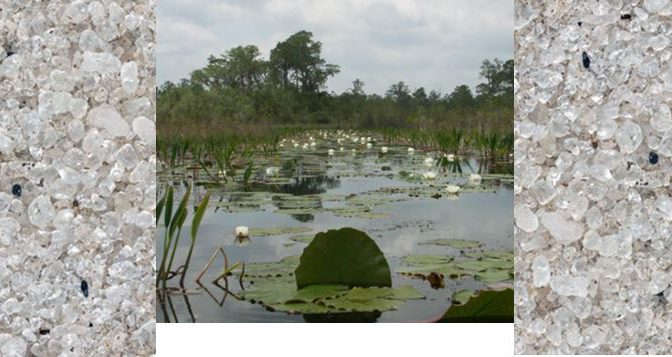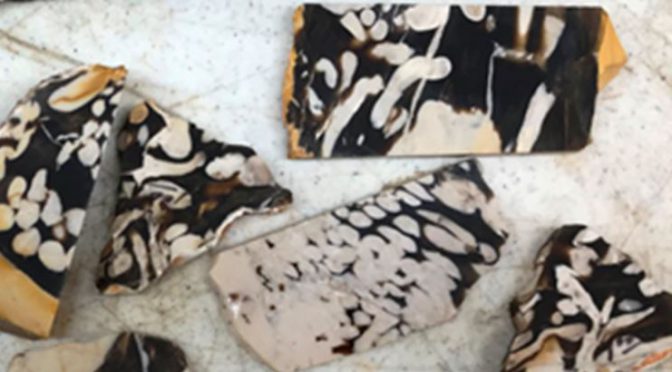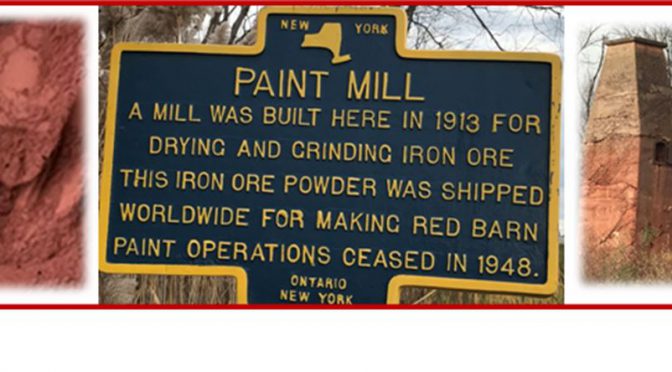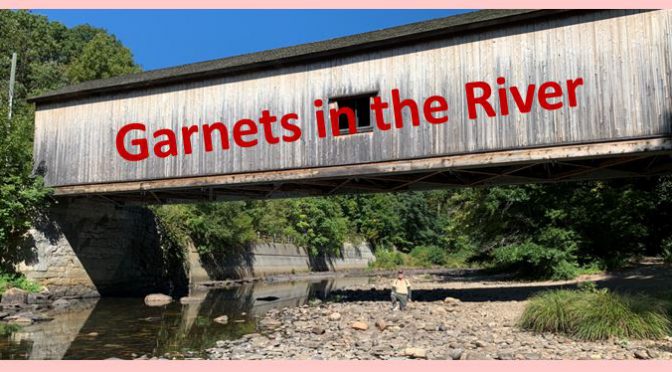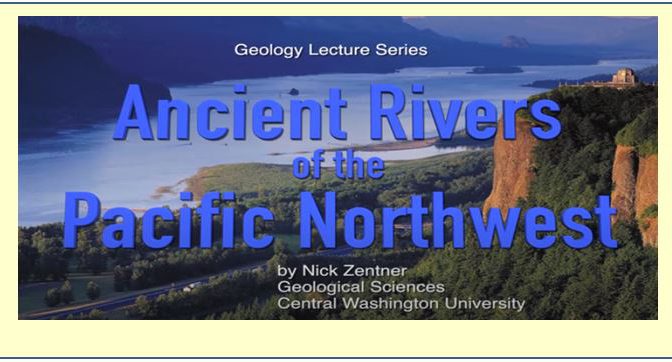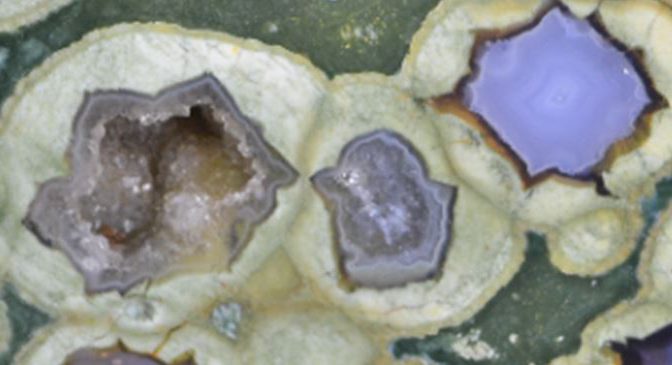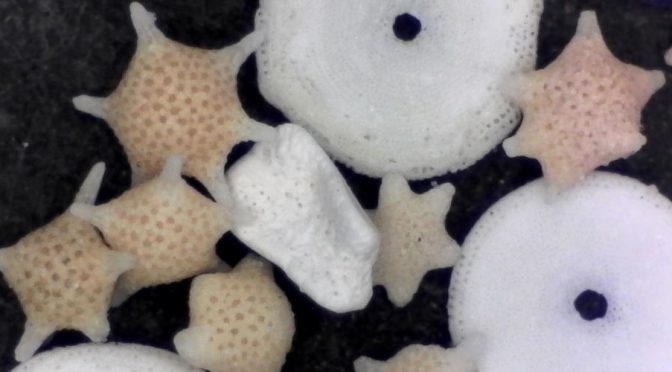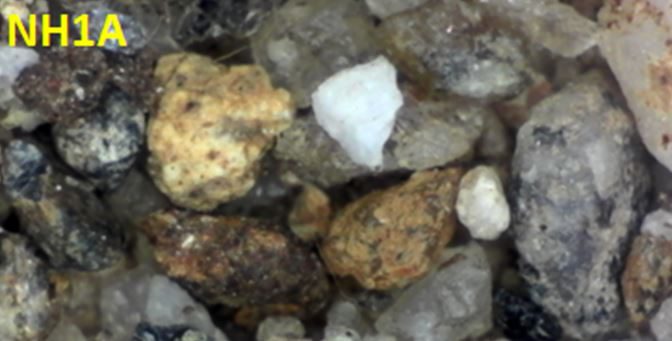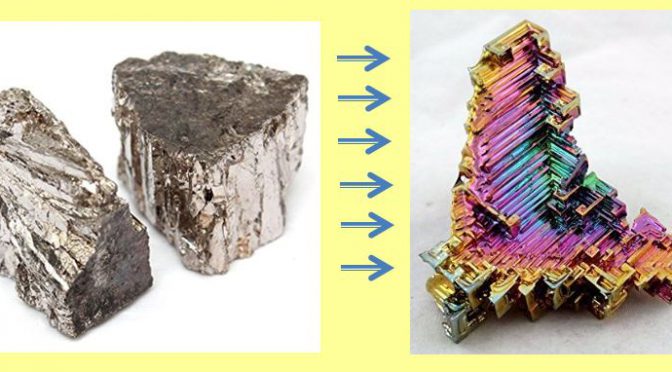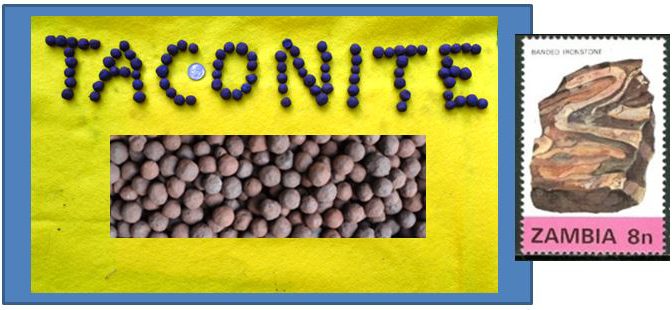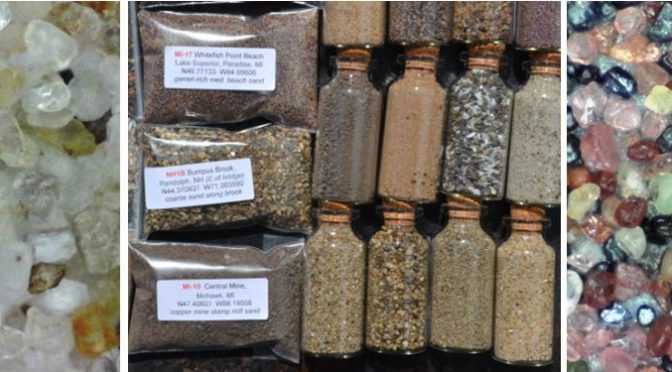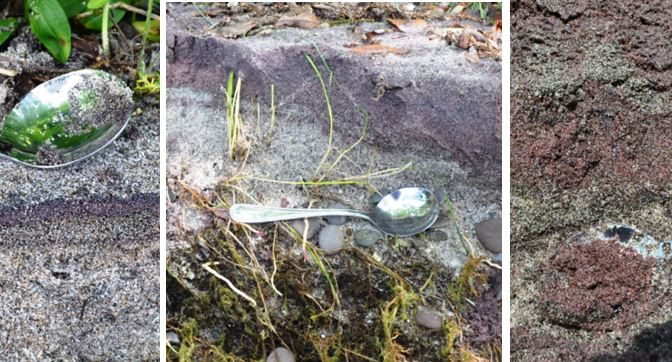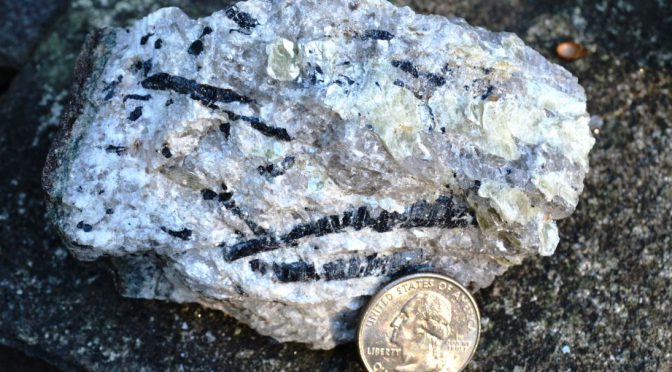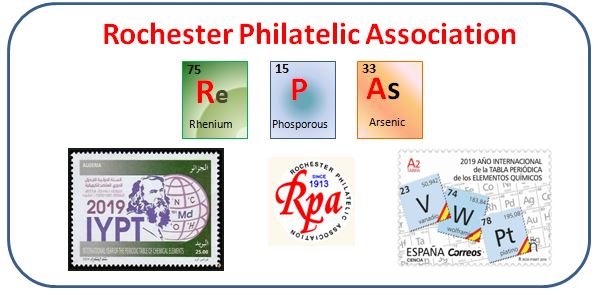In early 2020, I was comfortably sitting in my man cave planning a September trip to collect beach sands along the coastline of southern New England. While cruising along the shoreline using Google Maps satellite images I spotted a bright red patch of beach near Madison, Connecticut. Zooming in, there seemed no doubt. The beach sand there is red. Could the dominant mineral in that patch of beach be garnet? If it is, this could be a highlight stop along the trip. Continue reading A Sea of Garnet Sand
Category Archives: Geology
Sand from a Swamp
In September, I met Leo Kenney at Plum Island in Massachusetts and later at his home northwest of Boston. And yes, we traded sands. One that I came home with intrigued me. It was labeled Floyd’s Island, Okefenokee Swamp, Georgia. From all appearances, it was fine-medium-grained quartz-rich sand, much like one you might find on an ocean beach. But this one was from a swamp. I needed to know more. Continue reading Sand from a Swamp
Peanut Wood
The polished slabs that were raffled at the Wayne County Gem and Mineral Club October workshop are called peanut wood, but they actually have nothing to do with peanuts. Yes, they are petrified wood, so that part is correct, but the white-cream ovoid-shaped markings inside the wood have a rather unique origin. Continue reading Peanut Wood
Ontario Center Paint Mill
I had driven by the sign in the title box dozens of times and often wondered what might be behind the cattails and railroad tracks in Ontario Center. Motivated by the visit to the old Wolcott furnace last month and by the possibility of obtaining a hematite “sand” sample I decided to stop on my next excursion that took me through western Wayne County on Route 104. Continue reading Ontario Center Paint Mill
Garnets in the Salmon River
Article from November 2020 Wayne County Gem and Mineral Club Newsletter
While Linda Schmidtgall liked the garnets weathering from a schist roadcut in Tolland, I believe I have had more fun playing with the garnet-bearing sand recovered from below the Comstock Covered Bridge in East Hampton, CT. Both make great sand samples and both sourced their garnets from the Devonian Littleton schist, a mica- and garnet-rich metamorphic rock formed during the Acadian orogeny (mountain-building event) ~375-325 million years ago. The Acadian event was the third of four orogenies along eastern North America that collectively created the Appalachian Mountains and surrounding terrains.
A Lecture Review: Ancient Rivers
I have featured book reviews multiple times on my blog, and even had one music review. Given the unusual circumstances of a stay at home pandemic, it only seems reasonable to offer a Lecture Review. I stumbled on this one circuitously through a Facebook Group of which I am a member,
Nick Zenter is a Professor of Geology at Central Washington University in Ellensburg, WA. He has produced a number of online lectures, both for his students and for the general public and it seems many of them are readily available to all who wish to learn a bit of geology. I’ve watched a couple so far and will likely watch more. Continue reading A Lecture Review: Ancient Rivers
That’s a Lotta Water
Wayne County has over 35 miles of shoreline on Lake Ontario, the easternmost of the five North American Great Lakes. Most of us have favorite beaches along the lake for hiking and for rock collecting. Others seek the solitude of a kayak trip on a warm summer day. From a safe distance, we watch Mother Nature beat up the coastline each winter and patiently wait for spring and new adventures. Of course, we’ve also been known to trek west and visit some of those other large lakes.
Sure we all know the Great Lakes are large and very deep and we know they were carved out by glacial action just a bit more than 10,000 years ago. But I wonder if we truly appreciate just how large and how big these lakes are? And just how much water they contain. With a bit of time on my hands when I was not traveling as I would have liked, I thought I’d try to compile some of the numbers and put our little backyard pond into proper perspective. Continue reading That’s a Lotta Water
Ancient Glacial Loess
The global pandemic has all of us re-thinking our daily lives. I had to cancel (or at best postpone) a May trip to collect sands from New England beaches. With my time at home, I chose to walk about my neighborhood. While doing this I was always alert to opportunities to collect sand. They would certainly not be as exotic as Cape Cod or the creeks in the Berkshires of western MA, but perhaps they could still be interesting.
One location I wanted to sample was in a small town park close to my home which contained a nice half-mile trail through the woods. My home sits atop glacial lake sediments (or dunes created when the glacial lake emptied). I have dug for fine sand there (Sand Times, vol 1 #1, pg. 2). The surface geology map of western NY suggests this park might be outside the lake boundaries. Might the sand there be different? Continue reading Ancient Glacial Loess
Blue Sand from California
Sand comes in virtually all colors, however, as my collection grew this past year, I was not adding much blue to my collection. In fact, I really did not have a blue sand until a very unique and interesting sand appeared in the trade box that Bill Beiriger sent me in January. It was inauspiciously labeled as fine, blue-gray sand from a location 12 miles east of Livermore, California. The GPS coordinates Bill provided placed the site closer to Tracy, California and in the Diablo Mountain foothills.
Bowling Ball Beach
Given the travel restrictions surrounding the coronavirus , it is not possible to do much field planning yet this year, but that does not mean we cannot take some virtual trips. For starters, I found an interesting beach with some neat geology. Bowling Ball Beach is in northern California and there are huge concretions scattered along the Pacific Ocean shoreline. They call them bowling balls, but they look more like small moons to me. I decided to learn more about them.
Rain Forest Jasper
Each month at the Wayne County Gem and Mineral Club Saturday club workshop our President (who doubles as our Collection Curator) brings along something from the club collection to raffle off to all who attend the workshop. This month she arrived with a superb spread of unpolished slabs of Rain Forest Jasper, a very specific form of jasper from the Mt. Hay volcanic field in central Queensland, Australia.
The Sands of Guam
This winter I have been an active sand trader, acquiring sand from around the world in exchange for some I collected on our club trips last summer. I could fill a book with stories and pictures of these sands and their locations. However, for now, I have selected one location and two sands to highlight. But first, a little history and a bit of geology.
Bumpus Brook Sand
It seems many sand collections focus on ocean beaches. This is understandable. The settings provide gorgeous destinations and the sands can be wonderfully textured. I like beach sands, but don’t want to short-change river sands in my collection. Unlike beaches, where provenance is hard, or even impossible, to define, river sands offer an interesting opportunity as their provenance can be determined. Naturally, this is not easy if your sample comes from the Mississippi River delta but consider the other extreme, a sand sample from a mountain stream.
Last July, I traversed the White Mountains of northern New Hampshire on a return trip from Maine. Just off Route 2 north of the Presidential Range is a short, 3 mile (5 kilometers) drainage between two ridges on the steep north slope of Mt. Madison. It is called Bumpus Brook and a small bridge along Pinkham B Road allows access. Much of the creek’s sediment load is larger than sand size with cobbles and small boulders strewn along the flowing stream. But, at bends on both sides of the bridge, there are sand bars that can be sampled.
Cooking Up Some Bismuth
Lots of folks like minerals. Many of us also like to cook. At the October meeting of the Wayne County Gem and Mineral Club Inga Wells brought native bismuth and her “cooking” equipment and showed us how to cook up some bismuth crystals. Everybody got a close-up look at bismuth stew and then got to take a piece home.
Bismuth (Bi) is a post-transition metal with an atomic number of 83, directly beside lead on the periodic table and below antimony and arsenic. However, unlike arsenic, bismuth is non-toxic and heating to the melting point does not emit dangerous fumes. That said, the silvery-white metal melts at 530⁰ F so you might want to wear gloves and observers should keep at a distance while the crystals grow. Inga told us that stainless steel pots and silverware and a hot plate seem to be the best tools for heating and handling the molten material. It is further recommended that once pots are used with bismuth that they are retired from primary kitchen use! You can also see that Inga wore safety goggles, although not gloves.
Taconite
In August, the Wayne County Gem and Mineral Club undertook a two-week trip to the Upper Peninsula of Michigan. The trip took us through Marquette, or more specifically the Marquette Iron District, where we spent three nights visiting and collecting. We attended two field trips planned by the Ishpeming Mineral Club, their club show, and also made several trips to Presque Isle Park and other Lake Superior shoreline locations. It was on the first of the club trips that we were introduced to the Iron District and to taconite. We visited the enormous dumps of the Republic Iron Mine, 20 miles west of Marquette. Continue reading Taconite
Virginia Unakite
It was the final day of the Wayne County Gem and Mineral Club’s eight-day trip to Kentucky and beyond. We had spent Labor Day weekend with the Catawba Valley Gem and Mineral Club in central Kentucky collecting calcite, dolomite and a bit of fluorite in two quarries and quartz geodes from a tributary of the Green River. We also had lots of Kentucky brachiopods, Tennessee crinoids and Virginia staurolite packed into just about every available spot in the car. But the trip home from Lexington, Virginia would only take 8 hours, plenty of time to make one quick stop.
Linda Schmidtgall and I decided our final stop would be just 5 miles east of Interstate 81 in Rockbridge County, Virginia. Beard (2017) stated that Little Marys Creek “is one of the best places in Virginia to collect unakite”. We thought we would find out if he was correct.
Arenophilia
I have a confession to make. I have become an arenophile. Fortunately, it is not illegal (unless trespassing while doing it or if you are in Sardinia), and it should not be harmful to my health. I would say it is generally not contagious, but I did catch it this past spring when Jim Rienhardt introduced us to the hobby in the Wayne County Gem and Mineral Club November 2018 newsletter and later at the March meeting. I did not realize I was hooked until this summer. While collecting minerals on club trips to Maine and in Michigan, I looked for sands to collect and proceeded to fill quart freezer bags at a few dozen locations along lakes, rivers, and even from glacial deposits. You see an “arenophile” is a lover of sand. The word is derived from the Latin “arena” (sand) and the Greek ”phil” (love).
Hamlin State Beach .. and garnet sand
Last March, Jim Rienhardt brought his collection of some 270 sands to the WCGMC meeting and told us about arenophiles (sand collectors) (Reinhardt, 2018). Jim repeated his presentation at the Rochester Academy of Science later that month. At that meeting RAS member Paul Dudley brought along some sand he had collected from Hamlin State Beach some 50 years ago. Paul’s sand was red and dominated by garnet, but full of other heavy minerals. He told us that the sand had been collected during a college field trip late in the spring when Lake Ontario first started to recede from winter highs.
I parked that in my memory and on my calendar and on July 8th set out to find some “garnet” sand for myself. I was not disappointed. The first stop I made was at Area #5 at the west end of Hamlin State Beach. The Lake level seemed to have dropped, perhaps a foot from its highest erosional cut. And in the bank left when the lake level was highest was a 2-3 cm thick band of black and red sand. I sampled and took pictures and moved to other areas of the park.
Barrus Farm Pegmatite
The Barrus Farm pegmatite outside the small hamlet of Lithia, MA has become a regular stop on Wayne County Gem and Mineral Club’s western New England field trip each of the past three years. It is not a large site and the pegmatite there has never been quarried, but it does hold a special place in the world of gemology. It is the type locality for goshenite, which is white beryl. Yale University mineralogist Charles Sheppard identified the Barrus Farm white beryl in 1884 and named it after the town of Goshen about 3 miles east of the location. Continue reading Barrus Farm Pegmatite
Mendeleev’s Creation Revisited
Yes, this is a bit of a repeat article. But I changed it a bit for publication in a stamp newsletter rather than a mineral newsletter and have decided to post again. It is my blog, so I can do that !! You, however, do not need to read it again, or at all.
